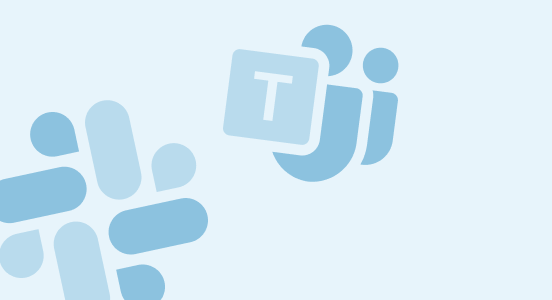
How to optimize your access management: a step-by-step guide
- Uncategorized
- 8 min read
Human factors remain to be the major cause of business data leaks and workflow interruptions. As a result, it leads to management and stakeholder dissatisfaction. Mainly because they have to deal with the consequences of poor performance, project delays, employee credentials breaches, and, often, financial losses.
The rise in popularity of remote work and virtual offices makes it even more challenging. When setting up a safe remote work environment, the company management has to take into account so many factors. For example, setting regular check-in times and audits, documenting everything, establishing clear expectations, and access control, among others.
This is especially relevant for small and medium enterprises with 50 to 500 staff members. Not to mention that always keeping in mind the compliance issue, authority chains, and messaging back and forth throughout the day may be overwhelming.
Thankfully, today’s market offers a myriad of automation software options that help company managers streamline internal processes and mitigate risks. This article will guide you through major moments to give consideration to when it comes to improving access management workflow in your business.
Investigate your current IAM workflow
It’s no secret that in order to stay competitive, a business should constantly evolve. Companies like Hewlett-Packard, Apple, and Amazon haven’t always been industry leaders. These businesses went through a number of iterations and pivoting on their way from garage startups to multi-million corporations. At some point, certain workflow patterns became obsolete, just like almost any hardware and software becomes outdated over time.
That is why routine audit of internal policies is so important. The identity and access management (IAM) software is no exception here. Before jumping off the deep end, spend some time studying your existing access approval workflow.
By identifying bottlenecks in your access control policies, you will get a better understanding of what should be changed in order to eliminate similar problems in the future. Ask yourself the following questions:
- Is the issue in the big number of operating environments your employees utilize for access control that waters down the processes?
- Could it be so that there are significant time gaps between that moment the access request is made and the moment it is approved?
- Or is it a lack of control over the shared documents that potentially may cause data leaks?
To check whether your cloud-based data systems are secure, there is the SOC 2 certification standard. It was created specifically to oversee and control the way third-party providers store business and customer information. To be SOC-compliant, the company must meet five main criteria such as security, processing integrity, confidentiality, availability, and privacy.

However, apart from taking care of the security level of your project by internal specialists, there is the practice when external auditors assess the business’s operations and decide whether they are compliant with the existing standards. Make sure you know all the traps and pitfalls, before proceeding.
Set legacy access management solutions aside
At some point, you may find that you have been using several access control solutions lumbered up on top of each other. Some of those solutions could be brought up as temporary measures to patch up certain workflow issues, while others are used so rarely that eventually, they were simply abandoned.
Not only may such an approach cause repetitive integration issues, but also be quite pricey to maintain. On top of that, multiple IAM software with overlapping functions leave too much room for violating permission policies, thus weakening your company’s security.
Most of the outdated software your company might have been using so far has cheaper, lighter, or more functional alternatives. Not mentioning being far more superior in terms of threat identification and response. So whatever makes you store all that unexploitable stuff, there is more than one reason to give it a good cleanup.
Raise awareness among your employees

Seamless filing and responding to requests is what distincts a good access approval workflow. Although developing identity and access management rules may complicate the policy, it is essential not only to provide employees with an ergonomic solution but also educate and motivate them to use it accordingly.
When it comes to security and threat prevention, even the most sophisticated IAM policies may fail if employees perceive it as an unnecessary burden. That is why it is vital to keep your workers well-informed about the tasks they are going to manage and why identity and access management is essential for projects they were embarked on.
This issue becomes especially critical when your team’s workflow includes accessing data from different sources. Whether it means sharing the workload with colleagues from other departments or providing access to third-party contractors, new people have a tendency to question existing access management policies. While some may think of it as a legitimate way to take shortcuts, it is up to management to explain that those policies are there for a reason.
Revoke excessive permissions
Statistically, employees are given excessive permissions and rights on IT platforms than they actually need to perform their work-related duties. It happens for different reasons, but most commonly because a small or medium enterprise has limited resources when it comes to hiring a full-fledged team of IT professionals.
The latest Uber hack, when an 18-year-old cybercriminal deceived an employee, stole their credentials, and managed to acquire access to some sensitive data, is quite an illustrative example. The question stands whether this particular employee should have had access to high-level information or was it just a case of a lousy IAM policy within the company.
It results in staff performing many roles to back up each other and ensure their daily tasks are accomplished. For some, granting high-level access to all seems is a more convenient way of handling multiple tasks. However, your subordinates may potentially cause serious incidents by avoiding consulting with the management and decision-makers.
As your business grows, employees change roles, and departments hire new professionals, access control permissions may go out of control. To ensure it doesn’t happen, here is little piece of advice:
- Define who has access to what, after classifying your data.
- Categorize access control, which includes dealing with public, private, and restricted data.
- Implement the principle of least privilege.
- Monitor access permissions.
- Regularly review the given permissions.
- Make sure only authorized personnel is technically capable of granting access to sensitive data
Automation software allows you to ensure employees have correct access levels. Such systems are designed so that only authorized users can access certain resources, files, and even areas. Plus, automation tools can update and/or revoke permissions when a staff member leaves, gets promoted or transferred.
Make things transparent
A properly designed IAM system is easily auditable and allows for tracking all permissions granted at any moment of time. A unified database containing all given privileges enables security specialists to study user activities and flag any abnormal behavior in a timely manner.
Isolating such events may prevent dealing serious damage to your company’s confidential data, in case any employees’ credentials were compromised. It also allows modifying IAM policies to revoke unused privileges leaving potential bad actors no room for maneuvering.
Apart from security benefits, a transparent access management system allows for onboarding new employees swiftly and modifying permission policies according to new project specifications, in order to optimize the workflow. A simple glance at permission and access logs can give you a broader perspective on your company’s business processes and give an idea on how to improve them.
Automate approval processes through access-management software
Proper automatization software can help your team to significantly speed up the workflow and also reduce the possibility of human error. Normally, a person is expected to memorize 150 passwords on average, which increases the likelihood of a password reset request.
Implementing an automatization scenario for password resets using a two-factor authentication (2FA) app or hard tokens can dramatically reduce the request processing time and give your IT department time to deal with really challenging tasks.
When optimizing your IAM policies, make sure you decide in favor of a solution that can be easily integrated with the software you currently use. This will spare your teammates from monotonous repetitive tasks like manually filing requests in a third-party system. The last thing you might need is to add another piece of software to that pile.
Adopting access control tools is fundamental
As you can see, granting access to the wrong people may set back a lot both in the financial and reputational sense. A good access-control solution is capable of solving this issue, but there are many factors to consider when choosing access-control systems for businesses.
Apart from what was said above, pay attention to whether access-control software provides you with everything you need and allows for setting unique alarm notifications, issuing custom reports, granting access to guest users and third-party integrations, and time-based access restrictions, to say the least.
Enjoyed the reading?
Subscribe to our fresh artiles, product updates and news

